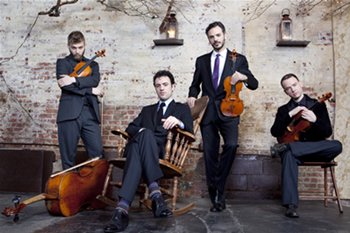On Friday night, the annual Strike at the Wind drama, directed by Jonathan Drahos, opened for a limited two-day performance at the University of North Carolina at Pembroke‘s (UNCP) Givens Performing Arts Center (GPAC). Last year, the play was held at the outdoor Lumbee Tribe Cultural Center, but due to ongoing renovations was moved indoors. Despite, the relocation of the play, the story remained the same. The drama, which details the history of Henry Berry Lowrie and his involvement with gaining all Robeson County citizens the right to vote, and ideally equal status in American society. Outside of the political elements of the historical drama, it also recalls Lowrie’s relationship and marriage to Rhoda Strong, and Lowrie’s strong familial relations and loyalty to those whose supported him. Ultimately, the combination of political and personal elements recounted throughout the play come together to create a drama that brings the history of the Lumbee people into a modern but traditional setting.
Typically, the play is held outdoors, as such, the set is often limited and stationary. This proves true for the indoor version, as well. The stage features three pieces: a small house (left), a large tree trunk (center), a jailhouse (right), and a sitting area also on the right-hand side of the stage. This set construction is influential in re-creating the dynamics of a small-town and tight community connections reflective of the time. The actors are able to move and dance with ease amongst this natural feeling of “being at home,” with a backdrop resembling the environment of Robeson County, both modernly and historically.
The set’s both welcoming and comforting dynamics were further emphasized by the lighting. The play, by detailing the acts committed and the choices made by Henry Berry Lowrie and the Home Guard of Robeson County, expectedly covers numerous deaths that occurred during the time that Lowrie was active. The deaths are narrated, and then a red light shines on the murdered. This red signals a singer, who represented Death, to collect the dead. In addition to the red light, more traditional lighting is used to spotlight speakers and scenes as needed. Although on Friday, one light was noticeably flickering during the first half of the show, that did not seem to impact the actors and their performances, nor the audience’s view of the play itself, despite its potential for distraction. (The issue was resolved by the second half, and all other lighting remained consistent and stable through the end.)
The production features many changes and many similarities to previous performances: The cast remains relatively unchanged, with Bill Oxendine portraying Henry Berry Lowrie, Cheyenne Ward as Rhoda Strong, and several others reprising their roles from the previous year. Expectedly, the reprisal of the roles provides the actors a high level of comfort with their characters and with one another. This not only made the play seem performed with ease, but also made the emotions and relations feel even more authentic. This authenticity produced a strong reaction from the audience. During the murder of Lowrie’s father, the forced removal of Lowrie and Strong’s family to fight in the Civil War, and during the scenes in which Strong and Lowrie’s relationship was strained by forces beyond their control, the audience was noticeably affected. These scenes are powerfully scripted on their own, but when combined with the skills and talent of the performers, they were comparable to high-level professional productions.
Most productions naturally lend themselves to one or two standout performances, however due to the aforementioned traits of the performers, many actors were observably equal in skill, talent, and on-stage presence. There were no performers, from the youngest to the most senior, to those who were part of the ensemble or the main characters, that weakened or lessened the impact of the play and its message. Each actor brought an exceptional level of passion and love for the story that was evident in every movement, line delivery, and song that was performed.
For the majority of the play, technical issues were not present. However, there were moments during the play when the actor’s voices could not be easily heard and their dialogue not easily understandable. These moments were not frequent and were quickly resolved when they did occur. Yet, even if the audience missed lines of dialogue, they could watch the actors’ physicality to understand the plot just as effectively as the dialogue could convey. More so, the performers seemed unbothered by the inconsistent volume, and they continued performing without pausing. Additionally, when the audience was encouraged to participate in the singing of “In the Pines,” “Amazing Grace,” and “The Battle Hymn of the Republic,” the microphone feedback and sound system was not overwhelmed by the increase in sound and combination of hundreds of voices singing in harmony. The choice to include audience participation reiterated the Lumbee community’s connection to Henry Berry Lowrie and the connection that they have to his story and the impact that it has on the modern community.
The choice to hold the play at UNCP’S GPAC has brought the community and University together once again, after several Lumbee Pageants which were held in the auditorium earlier this month. The story of a local hero and legend is being retold with just as much fervor as when the play first debuted in July 1976. It commands the attention of the audience, but also reignites the community’s excitement for local historical figures. Through the genuine passion of the cast members, the meticulous design, lighting, and production decisions that were made, the drama has proven to be equally as spectacular indoors as outdoors.
Strike at the Wind will be performed at GPAC for one more night on Saturday, July 22. For more details about this production, please view the sidebar.











